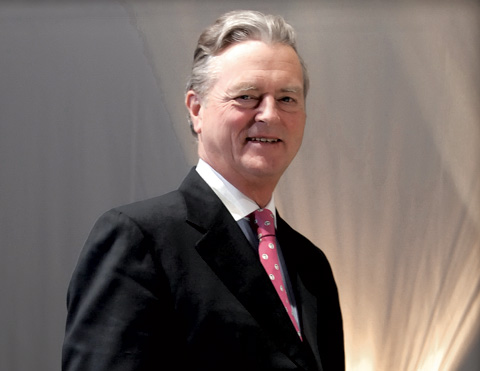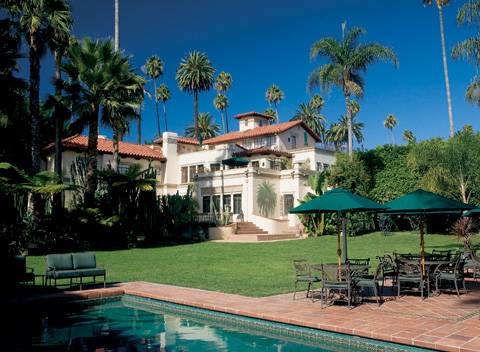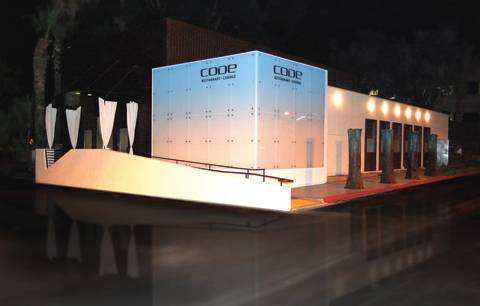Not one to rest on its laurels, the luxury car company is constantly innovating and refining.
Tom Purves has loved cars for as long as he can remember. “My father was involved in auto sales and growing up I read every issue of Autosport Magazine,” he explains from his Goodwood office, two hours southwest of London, where he currently heads up one of the world’s most prestigious auto companies: Rolls-Royce. The headquarters’ bucolic surroundings look more like an academic campus than an industrial one. Yet the unassuming buildings house a dynamic team of professionals who are innovating the auto world while paying the utmost respects to the brand’s revered history.
The team Purves leads has a median age of just 34, and is made up of representatives of some 20 different nationalities. These talented specialists are the modern day executors of Henry Royce’s vision of building the best, which attracted Purves to the car company from the very beginning. When he reached university age, his father encouraged him to go into the world of finance as a chartered accountant-the title given to business professionals in the U.K. who have undergone a set of rigorous exams and completed a number of years of work experience. But Purves would not be dissuaded from his passion. “I went and got an apprenticeship with the Rolls-Royce Company instead.”
The apprenticeship program proved to be a very good system of training. “It gave us a good perspective, because it was fully integrated,” he explains. He was technically an apprentice engineer, but explains, “I saw the whole process from start to finish.” As he became more familiar with the different sides of the operation, he realized that he found the business side a bit more compelling. “I would keep a change of business clothes with me,” he recalls, “so that I could go from the plant to meeting with customers.”
Since joining Rolls-Royce in 1967, Purves has held various roles, first as an apprentice then in various management positions. He joined BMW in 1985, and served as Chairman and CEO of BMW (US) Holding Corp., and President of BMW of North America, from 1999 to 2008. He rejoined Rolls-Royce Motor Cars Limited as CEO in July of last year. He is proud to note that, all these decades later, the company’s basic philosophy is still in tact. “Henry Royce’s motto was ‘Whatever is rightly done, no matter how humble, is noble.’ This principle is still evident in all of Rolls-Royce’s operations. The brand always aims to be the pinnacle of the automobile industry, whatever the era.”
In this era, it means an extended company. “We had a major increase in investment in 2003 that allowed us to open a new plant and debut new products,” he explains. “Being the pinnacle today means being at the forefront of technological innovation.”
The Phantom, which entered the market that year, is perhaps the best symbol for Rolls-Royce’s current era. It is incredibly stylish in a classical way, and the technological innovations that go into it ensure gliding, noiseless movement. While the four-door Phantom remains the automaker’s best-selling model, in the subsequent years, Rolls-Royce has followed up with variations on the original Phantom design: the Extended Wheelbase Phantom, in 2005; the Phantom Drophead Coupé, in 2007; and the Phantom Coupé, which debuted at the 2008 Geneva International Auto Show.
Not one to rest on its laurels, the luxury car company is constantly innovating and refining. In February, it unveiled the Rolls-Royce 200EX, the one-off, experimental forerunner to the Rolls-Royce Ghost production car.
“If the Phantom is a tux, then the Ghost is a well-cut business suit,” explains Purves. “It’s less of a ‘special-day’ car than the Phantom.” Certainly the Ghost is smaller, lower, and more agile, making it more city-friendly. The Ghost will have a 6.6-liter turbo-charged V12 engine, unique to Rolls-Royce. The engine will be combined with an 8-speed automatic ZF gearbox, and this new drive-train will significantly improve fuel and CO2 efficiency over the already class-leading Phantom series of cars. Engine power will be upwards of 500bhp. When combined with the lower price point, the Ghost is attracting the interest of first-time buyers. “We have shown in New York, Singapore, Italy, and Shanghai, and 85 percent of the people who have shown interest are not current Rolls-Royce owners,” he explains.
With the new clients and new markets (the company has seen a substantial growth of sales in Eastern cities like Abu Dhabi, Dubai, Beijing, and Moscow), the company is experiencing an upward trend, despite a downed global economy. However, he explains that there is more resilience in classic European and American markets. “We see more of a change in the countries where we had seen a lot of growth in recent years.”
That said, Rolls-Royce is not-and never has been-for everyone. “The nature of the Rolls-Royce is that it is and has always been a very aspirational car,” he says. “We have a very limited customer base, and this is by design. We have limitations based on the number of cars we can produce, and we cannot go beyond those, as they are imposed by our plant the number of cars we are capable of manufacturing.” To be sure, it is an exclusive product; only 1,212 models were sold worldwide in 2008, attesting to the brand’s self-selectivity.
With the long history, Purves often gets asked how relevant Rolls-Royce is today, and he is quick to emphasize that Rolls-Royce is not an antique brand; the technological advancements of the current models attest to that fact. However, the long background provides ample reason for the stellar reputation. “Ninety-six percent of the Rolls-Royce’s ever produced are still on the road. That’s tremendous!” With such rigorous standards of excellence, Rolls-Royce will continue to trump the competition, regardless of market, model, or recession.





















